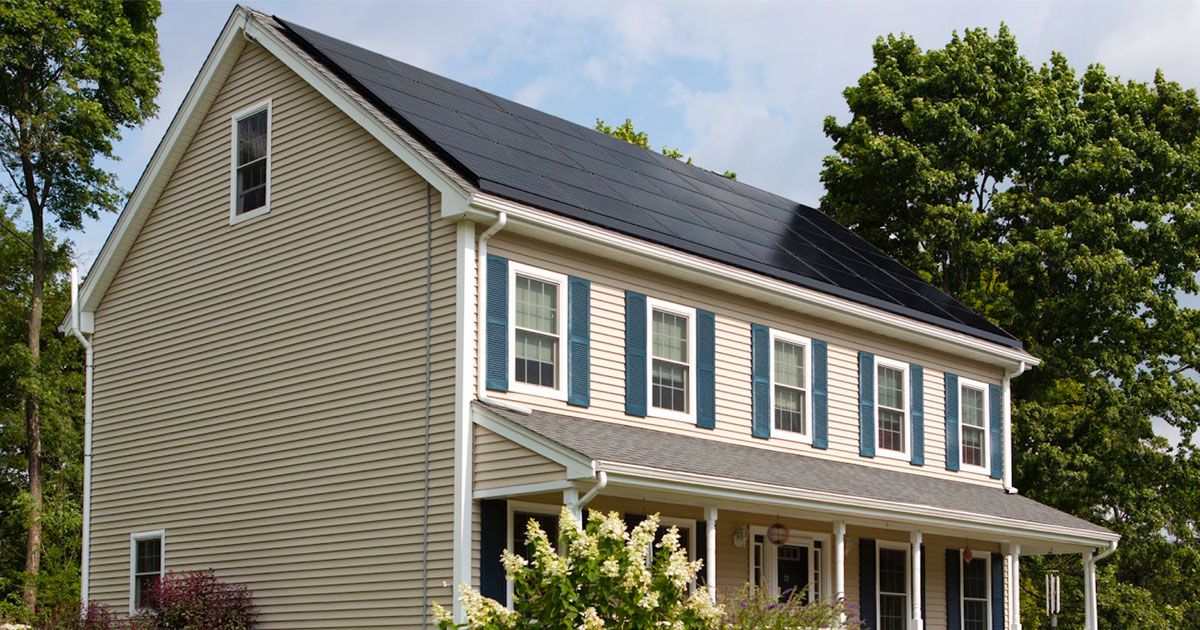Advertisement
Your Quick Guide to a Zero-Carbon Home
By Author
4 min read
Advertisement - Continue reading below
To combat the growing and impending climate change crisis, it is important that everyone does their part in living a greener life. Homeowners around the world are looking to use less energy to save money, reduce their carbon footprint, and live a more eco-friendly life at home. With a combination of small lifestyle changes and larger construction alterations, anyone can reduce the carbon footprint of their home. Most people think achieving a zero-carbon home requires installing solar panels or using propane as an alternative fuel, but this is not the case. Even if you never add renewable energy sources to your home, with these tips and tricks you can drastically reduce your household energy consumption and come closer to living in a zero-carbon home. Below are just a few ways to bring your home closer to energy equilibrium where your home does not use more energy than it produces.
Cool Roof
A cool roof is a roof that has been designed to reflect sunlight and absorb less heat than a traditional roof. Creating a cool roof involves covering a house’s roof with reflective paint, reflective tiles or shingles, or a specific reflective sheet covering. Dark roofs can reach 150°F when directly hit by the summer sun and a cool roof can stay 50°F cooler under the same conditions. Keeping a home’s roof cool greatly impacts the interior temperature of the house and can reduce the need for air conditioning which will lower the resident’s energy bills. A cool roof can also extend the service life of your roof with the lower temperatures putting less wear and tear on the roof over time.
Smaller Changes
A large construction project is not always feasible for every homeowner. Building a new zero-carbon house or retrofitting an existing home to be more eco-friendly is expensive and time-consuming, but that does not mean a house cannot be made greener. Here are some small changes you can make at home to reduce your energy usage.
Modern Light Bulbs

For years, incandescent light bulbs were the only light bulb option, but just as incandescent bulbs replaced candlelight, modern technology has brought superior replacements in CFL and LED light bulbs. CFL and LED bulbs shine brighter, use less energy, and last longer than incandescent. To achieve 1,000-1,400 lumens – a lumen is a measurement of brightness – an incandescent bulb needs 75W; a CFL bulb uses 18-22W; and an LED requires 12-13W making CFL bulbs 3 times more efficient than incandescent bulbs, with LED bulbs slightly edging out CFL bulbs. LED lights have an average life-span of 25,000 hours, CFL bulbs last for an estimated 8,000 hours, and incandescent bulbs shine for a mere 1,200 hours. It is clear to see that incandescent light bulbs do not hold a candle to CFL or LED light bulbs, making the modern bulbs the obvious choice for homeowners looking to make their home more eco-friendly.
Programmable Thermostat
The majority of household energy usage comes from heating and cooling, with the average household spending 30-45% of their total energy on interior temperature control. Most houses come with manual thermostats where you must turn the system on and off by hand. A significant amount of energy can be wasted should a homeowner forget to turn the heat or AC off, but a programmable thermostat can solve that problem. A programmable thermostat can be set to follow a schedule ensuring your HVAC system is never running when it shouldn’t be. Programmable thermostats are advertised to save a homeowner 10-30% on their heating and cooling bills in ideal conditions, but some studies have found the savings to be between 6% and 12%.
Don’t Save More to Spend More

A common issue homeowners run into when going green or zero-carbon is that they will invest in eco-friendly changes, save energy and money with those green changes, but they notice those savings shrinking over time. This is because people end up using more energy now that they have “saved” some. It is the same idea of spending more money on unnecessary purchases right after getting a pay raise; you effectively cancel out your savings by spending more because you have “saved.” It is circular justification that can be easy to get trapped in, but being aware of your energy usage can help combat this problem. Real-time energy monitoring will give you an exact reading of your energy usage, making it easy to notice trends and correct bad habits.
Creating a zero-carbon home is an admirable goal that is not as difficult to achieve as it may seem. With some small changes, you can push your house into the green and invest in larger changes to see a larger impact. Regardless of the eco-friendly changes you make, be sure you don’t cancel out your hard work by over-using energy.
Gwen Lewis is a writer who lives in California. She has been in the fashion and health industry for years and loves writing on the topic to give tips from experience. In her free time, she loves to stay active and has just taken on learning how to surf. For more, visit her online portfolio here.
Advertisement - Continue reading below












